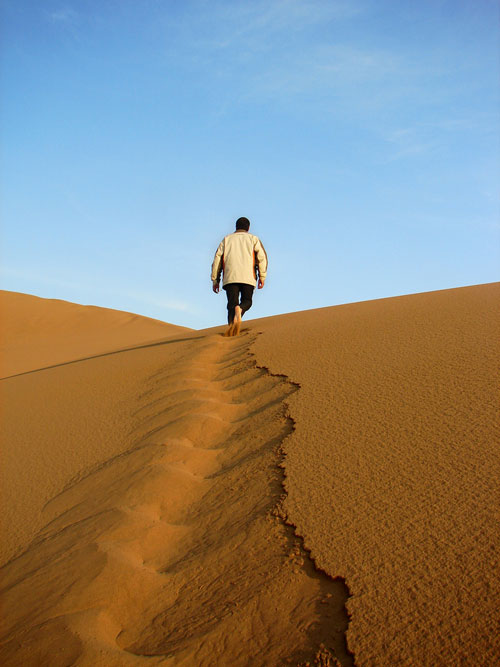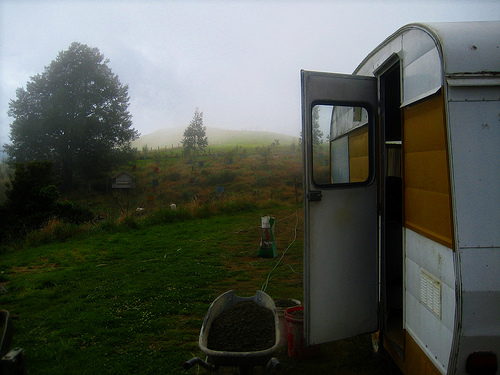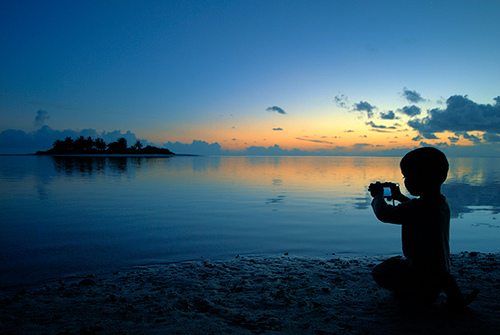There are so many ways to see the world. You can take a tour. You can go it alone. You can stay in hotels, hostels, camp, or heck — just sleep in the car.
Vagabondish is reader-supported. When you buy through links on our site, we may earn a small affiliate commission. Read our disclosure.
You can climb mountains and jump into waterfalls. You can see every museum on the block. You can visit the markets, study suburbia, take cooking courses, or do a home-stay to learn a new language. Or, you could just sit on a beach with a pina colada in one hand and a mai tai in the other.
Here are a few general ways people like to see the world:
Nature
Visiting natural wonders (large and small, well known and reclusive) are a bona fide way to see the world. You will see the most spectacular landscapes, ocean views, desert dunes, and natural anomalies.

Walking Maranjab Desert, Iran © Hamed Saber
In speaking with a fellow traveler in Hawaii recently, I asked when she went around the island if she visited a certain market (reputed to be the best on the island). She scoffed at me and said “A market is a market. I wanted to see what nature has to offer.”
Fair enough.
Another well-traveled friend replied with “Meh. You can only take pictures of so many beautiful sunsets before you realize there’s more to the world.”
Also fair enough.
Markets
Visiting markets will clue you in to a whole way of life. Markets around the world give you an indication of the economy, culture, diet, and resources of your destination. Every market is different around the world, from the products and produce offered, to the way of bargaining for and purchasing the goods. Although you can find markets that are riddled with tourists, more often than not they are there for the locals. If you want to see what the locals see and do as they do, visiting markets around the world is a great way to do so.
Language
Language immersion trips are increasingly common. They often involve staying in the home of a local family, in addition to taking lessons for a few hours each day. In so doing, you can learn a whole lot about how the locals live, taking a step away from the norm, and diving right into a place and learning to “swim” (or rather, speak) with the locals.
Voluntourism
Sad to say that this has become an actual word (albeit not yet recognized by my spellchecker), but it is. The concept is of course to spend the length of your trip volunteering for a worthy cause. There are many organizations out there now who will suit you up with the whole deal: accommodations, volunteer activities, excursions, and often language lessons too.

WWOOFing, New Zealand © fishermansdaughter
For the altruistic, it is a great way to see the world and make a positive difference in the meantime. Just a word of caution to do your research on the organization; not all volunteer tourism trips are created equal or truly for the benefit of the people (and not the organization’s pocketbook). It’s also worth noting that despite hours of blood, sweat and tears being poured into your vacation, don’t expect to save any money. In fact sometimes a volunteer vacation will be more expensive than sitting on a beach and having drinks served to you at will.
Museums
My father travels to see museums and art galleries. He purchases admissions in advance, plans his itinerary around the operating hours, and even ensures his accommodation will be within the perfect distance from all the museums in a city. For him, culture is in a location’s history. Naturally, Europe is one of his favorite destinations for all the wonderful history is boasts.

Young Photographer, Maldives © muha…
Beaches
Although I don’t know anybody who claims to seek culture and economic perspective by scouring and comparing the world’s beaches, there is something to be said for beach vacations too. The oceanic climate and animal activity changes from locale to locale, as does the color of the water and sand, current patterns, and swimsuit protocol. You’ll get a taste of culture by virtue of the beach vendors who cross your path, the drinks you imbibe, and music that wafts over to you.
But mostly you’ll get a great tan.
To Tour or Not
I would wager that many of our readers choose to march to the beat of their own drum and stay away from organized tours. In so doing, you are likely to get a slightly more authentic perspective on culture and activities, but sometimes it’s just not possible or preferable.
I have a friend who travels the world by climbing mountains. Because flying around the world with extensive and specialized gear is prohibitive and route-finding on advanced peaks can be dangerous, he chooses to travel under the wing of an expert guide. The “tour” package includes many provisions for camping, all food, accommodation, excursions, and of course, expert guidance up (and back down) the world’s most dramatic peaks.
There are other tours (Contiki for example) that are geared to certain age groups and cater to their interests and travel needs. If you are new to travel or worried about being on your own in a generally dangerous place in the world, then joining a tour may be the best way for you to have a great time, while also ensuring your safety.
Travel isn’t just about getting on a plane and seeing a new place anymore. Your personality and passions can be catered to in a million different ways. So the question is: how and why do you travel?


